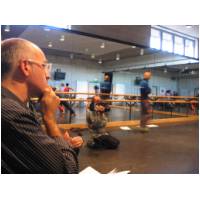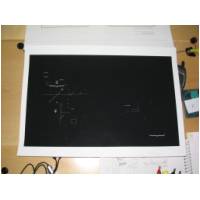PHASE II (H)
Introduction Objectives Experiments Summary [as of 31/05/04]
[1] Alan Wing and Kristen Hollands from the Sensory and Motor Neuroscience Centre, University of Birmingham took as their starting point a broad set of questions such as: what frames of reference are dance movements controlled in? Are the movements guided in space with respect to features of the room or with reference to the midline of the body? What are the crucial sensory systems for describing these frames of reference? How might selected disruptions or perturbations help to test this? In order to investigate these questions, four dancers learned and performed a movement sequence passing through three arbitrarily selected spatial reference points around the body. They were recorded performing these sequences using an optical motion capture system that records the timing and position of movement in a three dimensional space at a very high degree of resolution. Various disruptions or perturbations were introduced, e.g. performing with eyes closed and different parts of the body, at different speeds, in reverse and with mirrored and rotated reference points, etc. The collected data has undergone a preliminary analysis that points towards some possible benefits ranging from: an increase in the scientific understanding of how movement is planned and executed; to offering an improved or enhanced understanding of how to encourage artistic variability of movement and expand movement vocabularies.
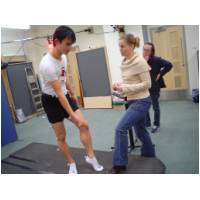
|
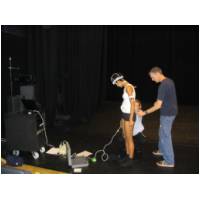
|

|
[2] Rosaleen McCarthy from the Department of Experimental Psychology, University of Cambridge was also interested in the notion of disruption, but took a very different approach from Wing and Hollands. Her interest was in exploring the cognitive "toolkit" of each of the dancers in order to gain a better understanding of the communication taking place between choreographer and dancer in the context of the choreographic process. She posed the following questions: how does the choreographer stimulate the dancers' creativity along the desired lines? How do they understand what he says? Is creativity assisted or hindered by any tensions in communication? Drawing on her expertise in neuropsychological methods for the investigation of cognitive representations, she set up some simple dual task experiments with the dancers using imagined movement (in imagio) as a means of approaching these questions. Dual task experiments assume that if one does two things at once there is a general loss of efficiency in cognitive terms and a specific loss if there is an overlap in the tools required. By asking the dancers to imagine a short known movement sequence and timing them without any interference and then asking them to imagine the same phrase while performing varying tasks, e.g. haptic/ spatial, verbal/ spatial, static visual, etc. she began to gather information that may be useful to McGregor in communicating movement generating exercises differently to his dancers; i.e. what sort of instruction/ stimuli he might choose to give and in what order, etc.
[3] Alan Blackwell from the Computer Lab, University of Cambridge studies the cognitive dimensions of design and notation systems in collaboration with a research community who adopt analytic methods from a range of fields including experimental psychology and design research. He collected notebooks and scores from McGregor and four of the dancers and used some of these analytic methods to try and discover where they might experience the limitations of these design tools. The aim of this project is to see how McGregor might improve on the use of notations in the context of his creative process.
[4] The following experiment has an ON-LINE continuation.
Phil Barnard and Tony Marcel from the Cognition and Brain Science Unit, Cambridge started with the premise that larger sequences of movement are constructed from smaller units. This makes it possible in the creative process to pull sequences apart so that components can be recombined. They wanted to investigate what the perceived units of movement would be in an experimental setup. Would perceived units differ for different kinds of viewers? Would perceived units differ for sequences generated under different instructions, for example lower level instructions (passing through points in space) versus higher level instructions (verbal/ emotional)? In order to obtain reliable experimental measurements to relate to these questions, they asked McGregor to give the dancers two different types of exercises to generate very short movement phrases. These phrases were videotaped and from these recordings a total of eight were selected for viewing and 'unitising' by McGregor and the ten dancers. They recorded their individual responses (lengths and numbers of units) in data collection forms, which have since undergone a preliminary analysis. Based on what the dancers each perceive to be single units, some of the initial results give interesting indications about how perceptions can be compared in relation to different types of instructions for generating movement material as well as giving a comparative picture across the entire company. While it is noted that the experiment forces a more analytical viewing stance and does so in relation to limited scope movement sequences, interesting questions nevertheless emerge from looking at the results about what is and isn't noticeable, and this may be something that could contribute to the collective making process.
[5] Tony Marcel conducted a series of structured interviews to probe levels of introspection and awareness during the creative process. This involved each dancer recieving a new set of instructions from the choreographer for generation of movement followed immediately by interviews with Marcel. The aim was to see if they could characterise/ articulate what they were aware of and unaware of in generation and problem solving in dance creation. The interviews also sought to capture the overall phenomenology experienced by and preferred by generating dancers.
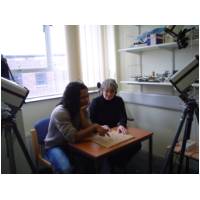
|
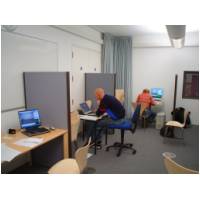
|
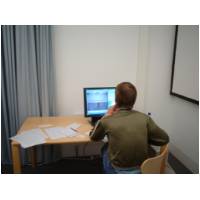
|


